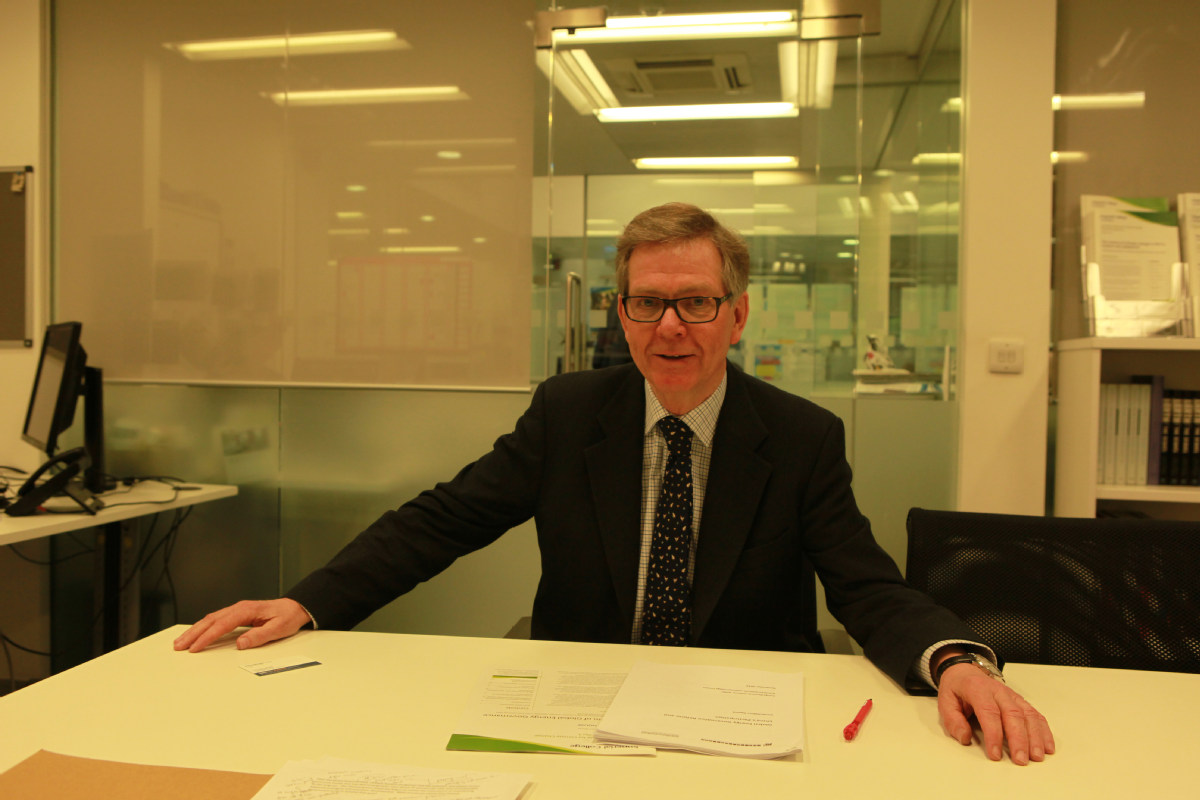Academic praises new environment ministry, prosecution of polluters


China’s new Ministry of Ecology and Environment shows Beijing’s determination to reconcile economic growth with environmental protection, says a British energy policy adviser.
President Xi Jinping’s speech on the subject at last year’s 19th National Congress of the Communist Party of China, coupled with the creation of the ministry in March, demonstrates a strong commitment to address the issue, said Neil Hirst, a senior policy fellow at the Grantham Institute for Climate Change and the Environment at Imperial College London.
“It’s a tough call because China still needs rapid economic growth to fight against poverty and achieve the aim of a moderately prosperous society,” he added.
Hirst, who also works with the Chinese government on its policies for international energy cooperation, said: “The fact that more than 1,000 officials are to be punished for failing to fulfill environmental protection duties is a sign of determination, but it is also, perhaps, an indication of the extent of the challenge.”
At the recent launch of his book The Energy Conundrum: Climate Change, Global Prosperity, and the Tough Decisions We Have to Make, Hirst lauded China’s aim of reducing the energy intensity of its economy by 15 percent between 2015 and 2020, saying it is the most important target as it detaches economic growth from carbon emissions. He said success requires the rapid rebalancing of the Chinese economy, from heavy industry toward services and domestic demand.
“It will require further improvements in industrial efficiency and energy regulation, which are already high priorities for the government,” said Hirst, who noted it will also be important to continue to adopt low-carbon technologies, such as solar and wind energy.
Hirst argues that developing countries are responsible for most greenhouse gas emissions today and will produce all future growth in the emissions.
According to the International Energy Agency, energy-related carbon dioxide emissions from developed economies in the Organization for Economic Co-operation and Development – including Europe, the United States, and Japan – were 11 billion metric tons in 2016, while non-OECD emissions stood at 19 billion tons. China alone contributed 9 billion tons.
The IEA expects emissions from the developed economies to gradually decline by 2040, while non-OECD emission will increase, to 25 billion tons.
During the 2018 two sessions meetings in Beijing, Li Ganjie, minister of ecology and environment, emphasized that green development is the way for countries involved in the Belt and Road Initiative to achieve a promising future.
Hirst said that means the emphasis should be on improving energy-efficiency, and on low-carbon energy sources, such as renewables, hydro, and nuclear power, together with the transmission and distribution networks they will need.
“It would probably be unrealistic to rule out new coal generation altogether, but … the absolute minimum of new coal plants should be highly efficient,” he said, adding that, in addition to concentrating on low-carbon hardware, “the Belt and Road Initiative should also help to educate governments, industry, and people, in the low-carbon policies, technologies, and practices, that China is now beginning to pursue at home”.
- Xi stresses efforts to build beautiful countryside with pleasant living environment
- China's pledge to cut pollution could avoid 94,000 deaths, save $339 billion: study
- New ministry to help nation keep word on emissions
- New forestry, grassland body to improve protections
- Over 1,000 held accountable for environmental damage
- Former senior political advisor of Sichuan sentenced to 14 years
- Beijing has undergone dramatic improvements since 2017's revamped development plans
- AI open alliance launched to pool resources for innovation and application
- China's ability to forecast floods boosted by holistic monitoring network
- Shenzhen court sentences 27 for smuggling antimony ingots
- China mandates significant cut in routine tests for primary, secondary school students





































